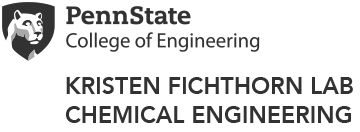Multi-Scale Simulation of Materials and Interfacial Phenomena
A continuing challenge in materials simulation is to conduct long-time simulations of structural evolution, while accurately retaining atomic detail. Molecular-dynamics (MD) simulations can provide accurate details at atomic scales, however, they are not practical for simulating times beyond the nanosecond range. In many materials, dynamical evolution occurs through a series of “rare events”, in which the system spends a long-time period in one potential-energy minimum before escaping and moving on to another. Since localized motion in the potential-energy minima is not significant, dynamical evolution can be simulated as a series of long-time jumps between potential-energy minima. This is the aim of kinetic Monte Carlo (kMC) simulations. In principle, if a kMC simulation can incorporate all potential-energy minima of a system and the transition-state theory rates of all possible long-time jumps between the potential-energy minima, then this technique can reach macroscopic times while retaining the accuracy of MD.
This work is supported by the US National Science Foundation.
Our Efforts have Focused on:
Finding Transition States
R. A. Miron and K. A. Fichthorn, “The Step and Slide Method for Finding Saddle Points on Multidimensional Potential Surfaces”, J. Chem. Phys. 115, 8742 (2001).
Accelerated Molecular Dynamics
J. - C. Wang, S. Pal, and K. A. Fichthorn, “Accelerated Dynamics of Rare Events with the Local Boost Method”, Phys. Rev. B 63, 85403 (2001).
R. A. Miron and K. A. Fichthorn, “Accelerated molecular-dynamics of rare events with the bond-boost method”, J. Chem. Phys. 119, 6210 (2003).
The Small-Barrier Problem
R. A. Miron and K. A. Fichthorn, “Multiple-time scale accelerated molecular dynamics: Addressing the small-barrier problem”, Phys. Rev. Lett. 93, 128301 (2004).
K. A. Fichthorn and Y. Lin, “A Local Superbasin Kinetic Monte Carlo Method”, J. Chem. Phys. 138, 164104 (2013).
